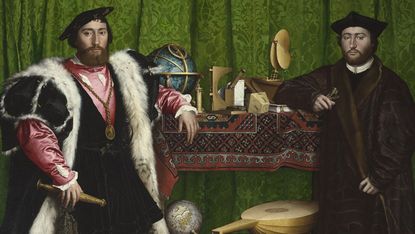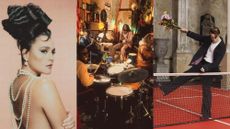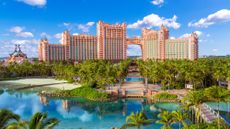Strange Beauty – reviews of German Renaissance art show
The good, the bad and the ugly - National Gallery show highlights troubled history of German Renaissance art

What you need to know
The National Gallery's new exhibition, Strange Beauty: Masters of the German Renaissance has opened to mixed reviews with some critics calling it "riveting", others "disappointing". In fact, the show explores the evolution of British attitudes to German Renaissance art, which was long considered an ugly, inferior version of Italian art, and fell further into disfavour during the two World Wars.
The exhibition features paintings, drawings and prints by the best-known German artists of the late 15th and 16th centuries including Hans Holbein the Younger, Albrecht Durer and Lucas Cranach the Elder. Runs until 11 May.
Subscribe to The Week
Escape your echo chamber. Get the facts behind the news, plus analysis from multiple perspectives.

Sign up for The Week's Free Newsletters
From our morning news briefing to a weekly Good News Newsletter, get the best of The Week delivered directly to your inbox.
From our morning news briefing to a weekly Good News Newsletter, get the best of The Week delivered directly to your inbox.
What the critics like
"Anyone interested in German art will want to see this show," says Jackie Wullschlager in the Financial Times. The mix of clinical precision and detachment with the drama of "interiority" is what makes the portraits at the heart of the show so mesmerising, though there are many other arresting works here too.
German Renaissance art has long been out of favour but this "riveting" exhibition finally gives it a star turn, says Laura Cumming in The Observer. The art is certainly strange, with starved bodies, broken limbs and a sheer starkness of emotion compared with the gorgeous Italian portraits of the era, but there are some fantastic pictures by Cranach and Holbein in this show.
The "undisputed German master of the portrait" is Holbein, says Alastair Sooke in the Daily Telegraph. Holbein's Lady with a Squirrel and a Starling, for example, has a delightfulness that warms the icy brilliance of its execution and a subtlety that is breathtaking.
What they don't like
The trouble is this show "highlights a weakness in the collection" overall, says Rachel Campbell-Johnston in The Times. It's a disappointment that feels more like an excuse to pull seldom-shown pieces out of the store cupboards and make them enticing by plonking a handful of famous masterworks among them.
Create an account with the same email registered to your subscription to unlock access.
Sign up for Today's Best Articles in your inbox
A free daily email with the biggest news stories of the day – and the best features from TheWeek.com
-
 'Republicans want to silence Israel's opponents'
'Republicans want to silence Israel's opponents'Instant Opinion Opinion, comment and editorials of the day
By Harold Maass, The Week US Published
-
 Poland, Germany nab alleged anti-Ukraine spies
Poland, Germany nab alleged anti-Ukraine spiesSpeed Read A man was arrested over a supposed Russian plot to kill Ukrainian President Zelenskyy
By Peter Weber, The Week US Published
-
 Today's political cartoons - April 19, 2024
Today's political cartoons - April 19, 2024Cartoons Friday's cartoons - priority delivery, USPS on fire, and more
By The Week US Published
-
 The Westbury Hotel review: stunning suites in charming Dublin
The Westbury Hotel review: stunning suites in charming DublinThe Week Recommends This hotel is the perfect spot to while away a weekend in Ireland's capital
By Kaye O'Doherty Published
-
 Drama movies 2024: new films out this year
Drama movies 2024: new films out this yearIn Depth Latest reviews include The Boys in the Boat, One Life and Tchaikovsky's Wife
By The Week UK Last updated
-
 Best new hotels and places to stay in 2024
Best new hotels and places to stay in 2024The Week Recommends Featuring stylish island resorts, historical properties and wilderness retreats
By The Week UK Last updated
-
 Albums of the year: best music of 2023
Albums of the year: best music of 2023The Week Recommends A look back at the best pop, rap, jazz, dance, classical and rock releases
By The Week UK Published
-
 Savoy Grill by Gordon Ramsay review: an institution reinvented
Savoy Grill by Gordon Ramsay review: an institution reinventedThe Week Recommends Traditions are maintained and the tweaks are clever and modern
By Neil Davey Published
-
 Tulum: a Mexican beach town of 'two halves'
Tulum: a Mexican beach town of 'two halves'The Week Recommends With the 'pueblo' and 'Zona Hotelera', Tulum is home to great hotels, restaurants and beach clubs
By William Leigh Published
-
 La Zebra review: beach chic, perfect tacos and secret cenotes
La Zebra review: beach chic, perfect tacos and secret cenotesThe Week Recommends Enjoy a stylish stay in Mexico at this family-friendly beach hotel and restaurant
By William Leigh Published
-
 Atlantis Paradise Island Bahamas review: a mythical beachside resort
Atlantis Paradise Island Bahamas review: a mythical beachside resortThe Week Recommends Combine the classically simple pleasures of sun, sea and sand with upmarket fun and food
By Adrienne Wyper Published